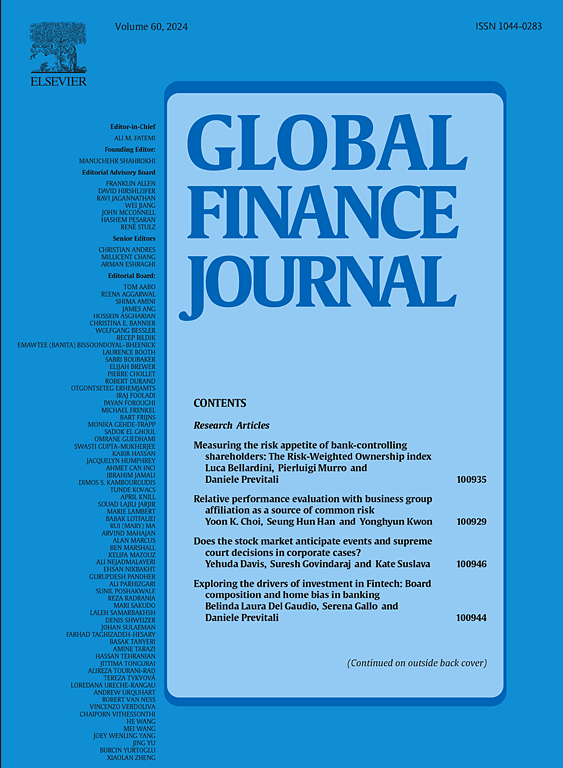加密货币和替代债券:共同运动和风险分担的新证据
IF 5.5
2区 经济学
Q1 BUSINESS, FINANCE
引用次数: 0
摘要
鉴于宏观金融、地缘政治和环境风险的不断上升,加密货币、绿色债券和伊斯兰债券等另类资产因其在风险对冲和多样化方面的潜力而受到越来越多的关注。本研究利用2018年至2023年的日常数据,研究了传统和黄金支持的伊斯兰加密货币、绿色债券和伊斯兰债券之间的动态回报溢出效应和风险分担相互关系。采用基于频率的分位数连通性和分位数交叉频谱技术的新组合,我们研究了不同市场条件下的时间和频率相关的互连。我们的研究结果有三个方面:首先,与传统加密货币表现出差异模式相比,伊斯兰黄金支持的加密货币、绿色债券和伊斯兰债券表现出强烈的协同运动和风险分担。其次,在2019冠状病毒病大流行和俄乌战争等市场压力时期,回报溢出效应和连通性显著加剧,伊斯兰黄金支持的加密货币比传统加密货币表现出更强的弹性和对冲潜力。第三,回报溢出效应在短期内比长期更为明显,这可能是由流动性流动、投资者行为和高频交易驱动的。我们的研究结果对投资者、基金经理、监管机构和政策制定者具有重要意义。本文章由计算机程序翻译,如有差异,请以英文原文为准。
Cryptocurrencies and alternative bonds: Novel evidence on co-movement and risk sharing
In light of the rising macro-financial, geopolitical, and environmental risks, alternative assets such as cryptocurrencies, green bonds, and sukuk have received increasing attention for their potential in risk hedging and diversification. This study examines the dynamic return spillovers and risk-sharing interconnections among conventional and gold-backed Islamic cryptocurrencies, green bonds, and sukuk using daily data from 2018 to 2023. Employing a novel combination of frequency-based quantile connectedness and quantile cross-spectral techniques, we investigate time- and frequency-dependent interconnections under varying market conditions. Our results are threefold: First, Islamic gold-backed cryptocurrencies, green bonds, and sukuk exhibit intense co-movement and risk-sharing, in contrast to conventional cryptocurrencies, which display differential patterns. Second, return spillovers and connectedness intensify significantly during market stress periods such as the COVID-19 pandemic and the Russia–Ukraine war, with Islamic gold-backed cryptocurrencies showing stronger resilience and hedging potential than conventional cryptocurrencies. Third, return spillovers are more pronounced in the short term compared to the long term, potentially driven by liquidity flows, investor behavior, and high-frequency trading. Our findings suggest important implications for investors, fund managers, regulators, and policymakers.
求助全文
通过发布文献求助,成功后即可免费获取论文全文。
去求助
来源期刊

Global Finance Journal
BUSINESS, FINANCE-
CiteScore
7.30
自引率
13.50%
发文量
106
审稿时长
53 days
期刊介绍:
Global Finance Journal provides a forum for the exchange of ideas and techniques among academicians and practitioners and, thereby, advances applied research in global financial management. Global Finance Journal publishes original, creative, scholarly research that integrates theory and practice and addresses a readership in both business and academia. Articles reflecting pragmatic research are sought in areas such as financial management, investment, banking and financial services, accounting, and taxation. Global Finance Journal welcomes contributions from scholars in both the business and academic community and encourages collaborative research from this broad base worldwide.
 求助内容:
求助内容: 应助结果提醒方式:
应助结果提醒方式:


